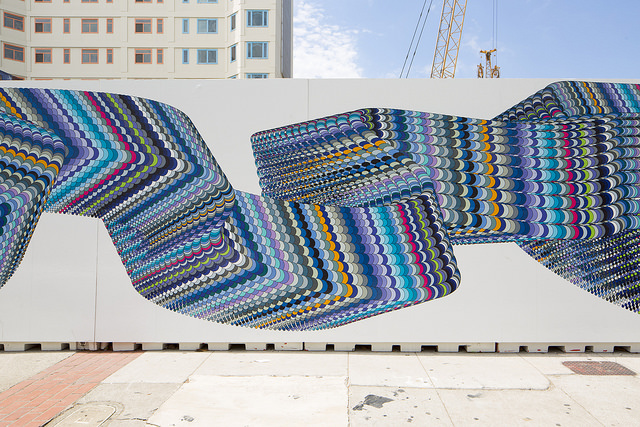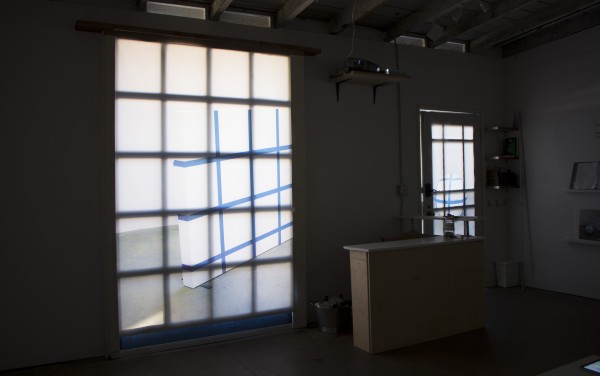Artists across the Bay Area are expressing shock and dismay after the Building Industry Association of the Bay Area (BIA) filed a lawsuit against the city of Oakland last week over the issue of public art in privately-funded developments.
The BIA Bay Area, a nonprofit association of contractors, developers and building industry business owners, is fighting the city’s percent for art ordinance, which they claim violates their first and fifth amendment rights.
“I consider this the ‘slip and fall’ of development lawsuits,” says Oakland artist Randy Colosky.
The ordinance, which already applied to Oakland municipal projects, expanded in early February to require that commercial projects costing more than $200,000 devote one percent of their budgets to public art. Residential projects must devote one-half percent of their budgets to public art. Alternatively, any building project can pay a corresponding amount into a pooled fund for public art programs.
“Developers owe it to the city and residents to enrich the landscape and culture of the urban space,” Emma Spertus, artist and founder of the Oakland studio building and residency program Real Time and Space, says.
“Public art is about the architecture of a space, the architecture of a community, the architecture of a building,” says Colosky, who recently completed a public art commission in San Francisco at the site of the future Central Subway.

Introduced by then-councilmember Libby Schaaf, the amendment was approved in Nov. 2014 and went into effect in Feb. 2015. The ordinance stresses public art is “important for the vitality of the artist community as well as the quality of life for all Oakland residents.”
This sentiment flies in direct contrast to the suit filed last week.
BIA Bay Area is represented by Pacific Legal Foundation (PLF), a conservative public interest law firm. The firm says the city is “forcing builders of homes and commercial projects to fund art works that have no reasonable connection to any public needs created by their building projects.”
Percent-for-art ordinances already exist in most Bay Area cities, including San Francisco, Berkeley, Walnut Creek, Emeryville, El Cerrito and Santa Rosa. Oakland, with its large and ever-growing artist community, follows a well-established trend of integrating public art into private developments.
Kristen Zaremba, senior public art project manager for the city says, “Support for the arts and the arts community is fierce and committed, from the mayor on down.”
So why sue Oakland, and why now?
Claiming the percent for art ordinance levies needless fees on developers, BIA positions itself as pro-housing in the midst of the Bay Area’s housing crisis. Since the ordinance is new and hasn’t yet accumulated any funds, perhaps the BIA seeks to cut off such expenditures before they become commonplace.

Colosky believes the economic argument is groundless. “As someone who has vetted projects for the city of Oakland, I know how little of the budget includes public art,” Colosky says. “It’s miniscule. If a developer can’t make money and include that, he’s not a good developer.”
As local artists and members of the community voice their anger towards BIA on social media and rally email-writing campaigns, the conversation also turns towards the possibilities of even more support for the arts.
Spertus has hopes for the city’s future arts spending, barring any setbacks from the lawsuit. “I hope the percent for art can translate into more artists grants. I think to be the caliber of city it should be, Oakland should be funneling even more funds to local artists, not just those who are doing public art,” she says.